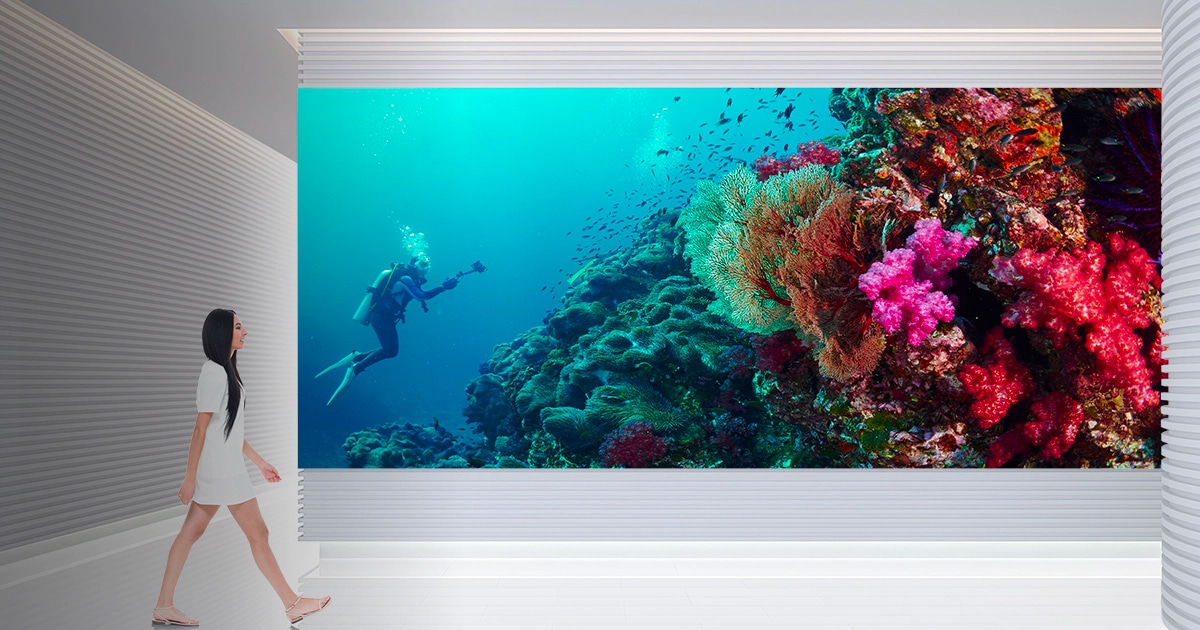A Thorough Analysis of Various LED Display Wall Techniques and Their Applications
A Thorough Analysis of Various LED Display Wall Techniques and Their Applications
Blog Article
LED video walls have become more common in different environments, including music events, sports competitions, as well as corporate meetings. These big screens consist of composed of many small Light Emitting Diode panels which function collectively to form a single unified image. Various multiple kinds of Light Emitting Diode display wall technologies on the market, every having its unique features and benefits. Understanding these options can help businesses and entities choose the right solution for their specific needs.
A common type of Light Emitting Diode display wall solution is the directly viewed LED. This solution uses separate Light Emitting Diode modules that are arranged near together to form a big display. Directly viewed LED walls are recognized for their elevated brightness and vibrant hues, which makes them ideal for outdoor activities and brightly lit settings. These displays also have a broad viewing angle, which indicating that people can view the screen distinctly from different locations. This makes directly viewed Light Emitting Diode screens a popular choice for stadiums as well as outdoor festivals.
Another type of LED display screen solution is the LED-backlit LCD. Such solution merges conventional LCD screens with LED backlighting for improved luminosity as well as hue precision. LED-backlit LCDs are often utilized in interior environments, such as shopping malls and meeting spaces. These displays provide excellent image quality while are generally more cost-effective than direct view LED walls. However, they may often function as effectively in well-lit environments, as the backlighting can occasionally wash out the colors.
Another thirdly choice is the Organic Light Emitting Diode display screen. OLED technology offers superior contrast and color depth compared to alternative kinds of screens. Every dot in an Organic Light Emitting Diode display produces its individual light, allowing for true blacks and lively hues. This makes OLED display screens especially appealing for applications that require high-quality visuals, such as gallery galleries and luxury shopping outlets. Nonetheless, OLED solution can be more expensive and may not be as bright as direct view LED walls, making it less suitable for outdoor use.
In addition to these technologies, various additionally various uses for LED video screens. These displays can be used for advertising, amusement, as well as information display. For instance, businesses commonly use LED display screens for electronic advertising to attract customers as well as promote goods. In entertainment, these displays enhance the sight encounter at music events as well as events, offering dynamic backgrounds as well as engaging visuals. Within business settings, Light Emitting Diode display walls can be utilized for presentations, video conferencing, as well as training programs, helping to communicate information through a aesthetically attractive manner.
To summarize, Light Emitting Diode display walls are available in various types, every having its unique benefits and uses. Directly viewed Light Emitting Diode screens are great for outdoor applications, while LED illuminated Liquid Crystal Displays are more appropriate for indoor settings. OLED video walls offer superior visual quality but may websites come at a higher price. Understanding these variations can assist organizations make informed choices about which type of Light Emitting Diode display wall best meets their needs, whether it be for advertising, amusement, and corporate use.